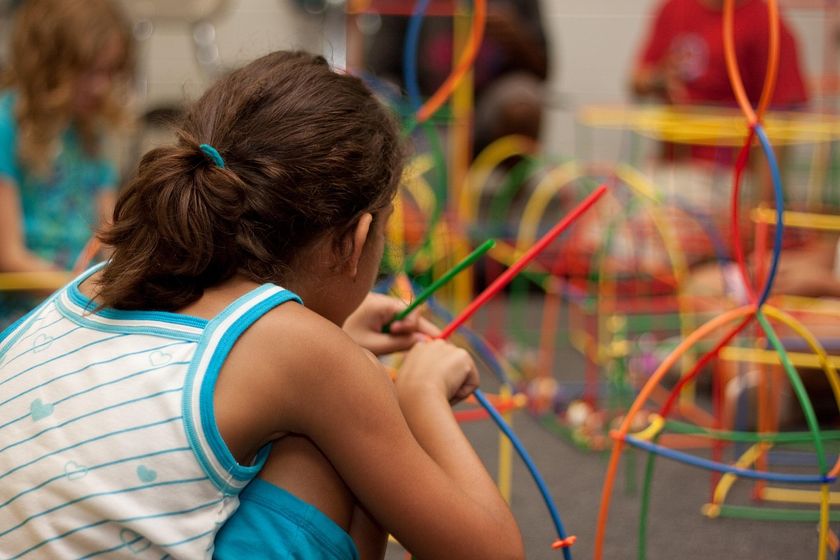5 Tips for Talking to Social Media-Addicted Teens
Talking to social-media addicted teens requires meeting them where they communicate

Wondering how to talk to teens glued to their phones who primarily communicate through SnapChat and TikTok? The new book, Does Your Teen Talk? No, But They Text, Snap, and TikTok, offers tips to get adults and teens talking more in a digital world.
Author Nicole Rice, a high school technology teacher from New York, collected years of insight from teens to conclude that they really do want to have conversations and form stronger relationships with adults. The trick is learning how to have these conversations when battling for their attention.
Here are 5 tips that parents and teachers can take to better communicate with teens:
1. Text me, Snap me
Texting may be the best way to communicate with a teen who is attached to their phone as if it’s a new appendage. It may be the only way until you reel them back in. Email isn’t a sure thing, but you have a 100% chance that a teen has opened your text. They may not reply, but they will see it.
On average, teenagers send more than 100 texts per day and mainly communicate through Snapchat and TikTok. Teens have groups to stay in touch with friends and family, so creating a Snapchat group with your students can be a great way to collaborate on a class project with pictures, messages, and emojis all in one place.
Lola, age 13 says, “My mom and dad don’t understand technology at all, and it drives me crazy.” Talk to your students on their platforms, and you can have a whole conversation motivating your class and it does not even have to be in complete sentences. A text saying, “DNF your test tomorrow and GL” (“Don’t forget your text tomorrow, and good luck”) just might lead to more time studying than saying it as they walk out your classroom door.
2. "Class, take out your cell phones"
Cell phones are an integral part of a teen’s life. Jay, 17, says, “When my phone is broken, I can not do anything else until it is fixed.”
Tech & Learning Newsletter
Tools and ideas to transform education. Sign up below.
Join students on their turf and encourage them to use their phones for exploration lessons. It is surely better than fighting for their attention while they hear their phone vibrating in their book bag under their seat with every new notification and cannot concentrate on anything else.
Ninety-four percent of students want to use their phones for school research, so encourage them to learn the proper way to find reliable sources, fact check, and download information, all without ever leaving their spot. Teens and smartphones are an unstoppable force and seeing the adults in their life giving them credit for using their device in productive and fun ways can be a great environment in which teens want to learn.
3. Get street smart
Become street smart, such as hallway monitors naturally do. You hear teens talking, and sometimes it can shock you, but monitors learn what students are going through and can provide insight -- boys are not mad at one another all that much, or don’t stay mad at least; girls get offended by the hour, and are best friends this week and enemies next week, and then it’s like nothing ever happened.
Jamie, 16, says, “I have FOMO (fear of missing out) all day, every day, every minute, wondering if I should be somewhere else.” Give teens a place to go, and allow them to have group meetings in your classroom much like when they have their friends over to their house. You want to know in person who they are hanging out with and that they are doing good things. When they come, make the environment unique and welcoming, offer snacks, a clean place to sit, technology access, or a fun atmosphere so they don't just end up in their room at home with the door closed.
4. Make a TikTok
During quarantine together and shelter in place, kids were roping their parents into creating content.
Sarah, 15, says what she likes to do most for fun is, “Scrolling through TikTok and making TikToks with anyone that will.” Kids spend hours each day engaging in ideas with one another through screens. So teachers can tap into these connections with their students; the same also applies to parents. Encouraging creativity in connecting is the hook in how to communicate better with teens.
In our digital video classes, you see kids creating TikTok videos that include all the production parts of the intro, supporting content, and a snappy conclusion, all while engaging and sharing their final project with a real audience. You cannot get a more suitable audience to motivate kids to do their best work than their own followers, and future followers they gain from making remarkable content.
Teens also need to see the purpose or reason they are learning something or you are going to get the “Cuts like a knife" reaction of "Why do we have to know this?" Or worse, "I am never going to use this."
5. Know the code
The coded language of teens can be good to know. Teens can be creative and quick with social media acronyms. Educating yourself on some of the slang so you can better understand what teenagers are saying and show you too are keeping up can lead to better messages over devices.
Some acronyms may surprise you as well, such as POS (Parent Over Shoulder) or Salty (upset or mad over something minor). Chris, 16, says, “I scroll through my dad’s phone all the time to see memes he sends the guys, but I don’t want him even glancing at my screen.”
Find more tips on talking to social media-addicted teens, including real hallway stories, real quotes from the teens, and cartoons to help you survive having teenagers in your day in Does Your Teen Talk? No, But They Text, Snap, and TikTok. Order the Amazon Audible version here.
Email the author at nicole@deruyterlake.com to receive a code for a free audiobook version.
Nicole Rice has spent the last 27 years as a certified high school technology teacher, and is the daughter of two high school teachers herself. She trains a new set of students each fall into becoming the district’s expert geek squad.











